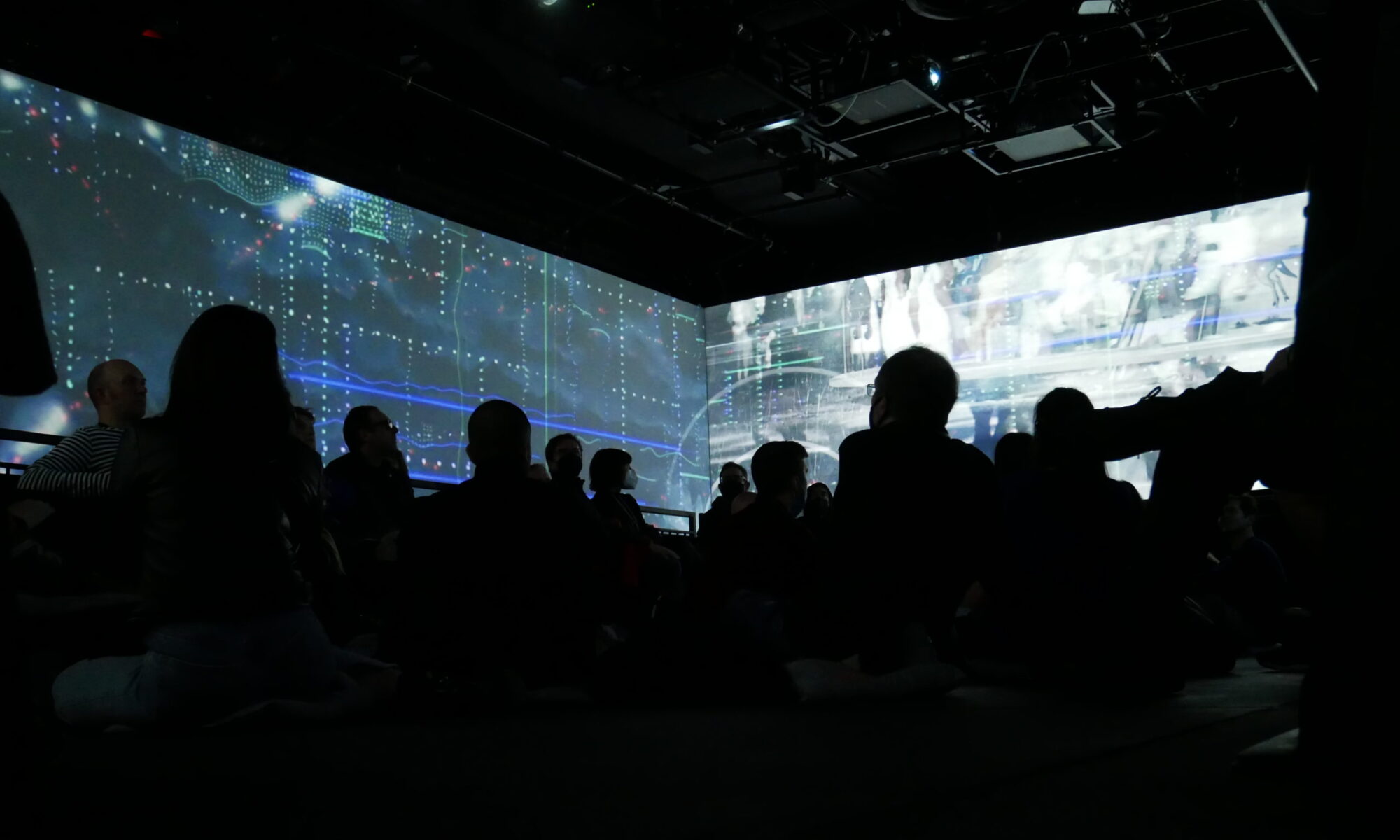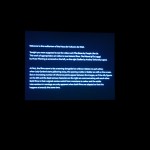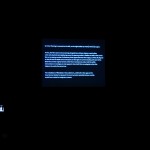UPDATE (2017) – Turns out the Mosfilm do NOT own Tarkovsky films, nor have they ever!!! We were not alone in receiving take down orders from them, they’d been sending them to many people for years. We were informed of this by Curzon who DO own them, at least now. The Zone is up here:
“Happiness for everybody! . . . Free! As much as you want! . . . Everybody come here! . . . There’s enough for everybody! . . . Nobody will leave unsatisfied! . . . Free! . . . Happiness! . . . Free!”
– from Roadside Picnic (the novel that Stalker is loosely based on)
The Zone is the first feature-length film by Vicki Bennett a.k.a People Like Us. Running Stalker and The Wizard of Oz side-by-side, it tells one story of two journeys to “the promised land, the world where dreams can be made real and reality is like a dream.” The films sit side by side, staying loyal to the linear narrative, but editing the longer film to the length of the shorter, revealing delightful harmonies and synchronicities both in images and narrative occurring far more than either pure chance would dictate or the imagination construct. The Zone is inspired by the Chance Operations of John Cage, Cut-Up techniques of Gysin/Burroughs and Kurt Schwitters, and single shot/durational films (Andy Warhol, James Benning).
The film was only screened once before being silenced by a legal claim by Mosfilm, the owners of the Tarkovsky film Stalker. It was due to be screened at at the opening of transmediale 2013 but was cancelled as a result of the film ceasing distribution. In reaction to this, transmediale screened a statement of protest in their auditorium for the length of the film. The statement is as follows:
Welcome to the auditorium of the Haus der Kulturen der Welt.
Tonight you were supposed to see the video work The Zone by People Like Us. This work of appropriation art refers to two historic films: The Wizard of Oz(1939) by Victor Fleming is screened on the left, on the right Stalker by Andrey Tarkovsky (1970).
At first, the films seem to be screening alongside but without relation to each other; when Judy Garland starts jabbering away, the opening credits in Stalker are still on the screen. But an increasing number of reference points appear between the images, as if the silly figures on the left and the dead serious characters on the right are communicating with each other. Both films in their original version switch from black and white to colour and the subtle interventions in montage are only apparent when both films are adapted so that this happens at exactly the same time.
The installation of The Zone in this auditorium, a hall built in the 1950s at the Inner German border to represent the communication possible between worlds, would have created an imaginary museum.
But unfortunately the legal department of one of the copyright holders, Mosfilm, insisted on stopping the distribution of the The Zone, which is why it has been withdrawn from circulation. Therefore we are not able to show the work right now.
We can just invite you to imagine an imaginary film museum.
This is the first legal claim made against my appropriation work in 22 years. I pay homage to content and my motivation is to make conceptual connections between context and content using folk art, and the majority of critics have found the result highly positive and often humorous in intention, as a result my work has been funded and supported by bodies such as The BBC, BFI and Arts Council England. I have received nothing but support, and heard nothing but outrage from those who have heard of this incident. The concept of this film remains strong, although it has transformed into something else rather quicker than I expected! — Vicki Bennett
THE ZONE by VICKI BENNETT [2012] Trailer from Vicki WFMU on Vimeo.
INTERVIEW WITH ALASTAIR CAMERON ABOUT THE ZONE, Autumn 2012
Could you say a little about how the idea of making The Zone came about?
I was watching Stalker in a cinema in Newcastle earlier this year, it was being screened as part of AV Festival 12‘s cinema program. The festival theme was “As Slow As Possible” and I’d not only been watching/hearing a number of events based around the wider theme, but also had spent the previous six months programming a radio station for the festival. All of this had obviously affected my hard circuitry. I’d watched both Stalker and Wizard Of Oz a number of times, but this time around when the switch came from monotone to colour I thought of the transition from monotone to colour in Oz. This started me thinking about the journeys that they all were going on of both through landscape and inner worlds of multiple levels of discovery.
What is it about the Wizard of Oz and Stalker in particular that led you to them – is it the formal or coincidental similarities that exist between these films, or is there something more universal about cinema and the idea of “zones” that you want to explore?
It was a very simple idea – and only by exploring something that isn’t process-based can you find out if there is more to it than the flash of light that comes to you in a moment. My response was one of inspiration rather than anything intellectual at that point… only by putting this into practice could I see what the exploration really might be, indeed if it would work at all.
What did the process of editing involve, and how much did you need to do in order to bring the two narratives closer?
Stalker is much longer than Wizard of Oz, so I had to decide how to deal with that without too much manipulation. I decided to edit Stalker down to the length of Wizard of Oz, of course still keeping edits in chronological order. I begun editing initially from the frame where both films change from monotone to colour – then worked my way forwards and backwards from those points, always keeping the sequence of events in order to keep the possibility for chance elements to occur.
The process with The Zone seems quite restrained or minimal compared to the grand cut ups and digital overlaying of some of your other films. Can you say something about why you went in this direction for this work?
Actually there are a number of works (film and audio) that I’ve made that relate to this – ones that are based on either an idea rather than work in progress, or on the idea of placing just two things next to/on top of one another to see how they may relate. Examples that come to me immediately would be
The Sound Of The End Of Music
Stand By Your
And lesser so (because it is edited but still relates in terms of mixing two things together, in this case genres) – The Keystone Cut Ups
It is more unusual of course that I would make something that mixes two things together that is also feature length rather than 10 or 20 minutes, and it took some courage on my part to do this since I am used to being more “pop” in my approach to the audience, but I realise that this is an illusion and a constraint, so it’s important for me to make this in this way. This is something I’ve been wanting to do for a while – I’ve always liked durational works, things that aren’t necessarily “fast”. That part is different to my work as People Like Us, and that is one reason why I’ve used my own name since although some people find People Like Us difficult (since it is sometimes dense/chaotic/collaged a lot), I don’t want them to have expectations in the other direction that it will be a particular kind of entertainment. In the large scale I don’t think this falls outside of my general tastes though.
I guess you’re aware of the old experiment with Dark Side of the Moon and Wizard of Oz, where there is supposed to be a synchronicity between the two. Was this in your mind when you decided to use the Wizard for your project?
No. I figure you can play Dark Side of the Moon with anything anyway! Once again, the mind is very willing to synchronise audio with images and desperate to make connections.
Do you see The Zone as a critique of this kind of “apophenia” – the unmotivated seening of connections and the ways we experience an abnormal meaningfulness in these moments? Or is this something you feel an affinity with?
Stalker is one of the most shamanic films I’ve seen – a journey within yourself as well as within the film narrative – I interpreted many levels and doorways, which were as much my own making as anything “real”. I saw a talk about Stalker, and people were coming out with all kinds of things that hadn’t crossed my mind or meant nothing to me, and on the other hand didn’t mention shamanism much at all! But this is how it should be – that one doesn’t impress too much into the narrative, leaving it open to flow… allowing multiple interpretations and different kinds of journeys.
The mind will try to make connections with whatever is presented to it, or hidden from it – and then relate this to the larger landscape of what one is experiencing, which results in perceptions that aren’t always “reality” – leaving space for one’s own imagination. And “space” is an important part of this kind of work – creating room for the imagination to be fed.
For some, cinema itself has always a form of artificially induced apophenia – with or without its dream zones. For example, it relies on our willingness to perceive a series of still images as moving, and because image sequences are constructed, we watch films with the assumption that something more magical will happen in them than in reality – that somehow everything connects. Equally, the idea of “the zone” seems to be very important in cinema as a whole. Not only in the sense that there are a lot of films, like the wizard or stalker, where characters journey into a place where the so-called laws of reality are challenged – time no longer runs in a linear way, dreams come true and space is differently composed, but more that this is part of the “magic” or escapism of cinema. In this sense, do you think cinema itself is a zone?
Yes – any artform that works by engaging with the audience in multidimensional levels is inviting them into a zone, or The Zone. For me, part of the effort is made by the creator, but another part has to be made by the person experiencing it. The experience should be open to interpretation in many ways, there should be many doors, windows, entrances and exists to a piece of work or a story, one should expect the audience to work a bit too!
Equally, there’s also a strong theme of entering the zone in The Wizard, and in Stalker, in a quest for self fulfillment, or spiritual illumination. In both, the characters do realize their quest in a sense, just not in the way they thought it would be (Dorothy and her travelling companions realise they have the power themselves to overcome their deficiencies, Stalker’s characters realise their quests were quite different to what they thought). Of course, the end result is quite different emotionally in the two – what do you think The Zone’s experiment achieves in these terms? Is is intended to provoke an emotional response?
I can only say what my discoveries were – I don’t intend anything other than to engage with the audience by presenting something of substance, so I hope that people will get something out of it. I don’t agree with injecting singular messages/intentions. I realise that this is different to instant entertainment, it requires more effort… is not immediate. The reason I put these two films on an editing timeline myself was to find out if I would find more than the sum of the two parts by them going on a journey side by side. This is the pleasure of working with found footage. It already happened and you have to walk with it, leaving it open to chance as much as manipulation – there is magic that can happen. And I think this does happen in The Zone, there are additional messages that could not have been found without doing this, and some humorous/incongruous and/due to unexpected coincidences. Most of all I wanted to see if something magical happened, like making a spell. And for me, that magic did happen.
You can find a review of screening of The Zone at Bristol Arnolfini in the January 2013 edition of The Wire here.



